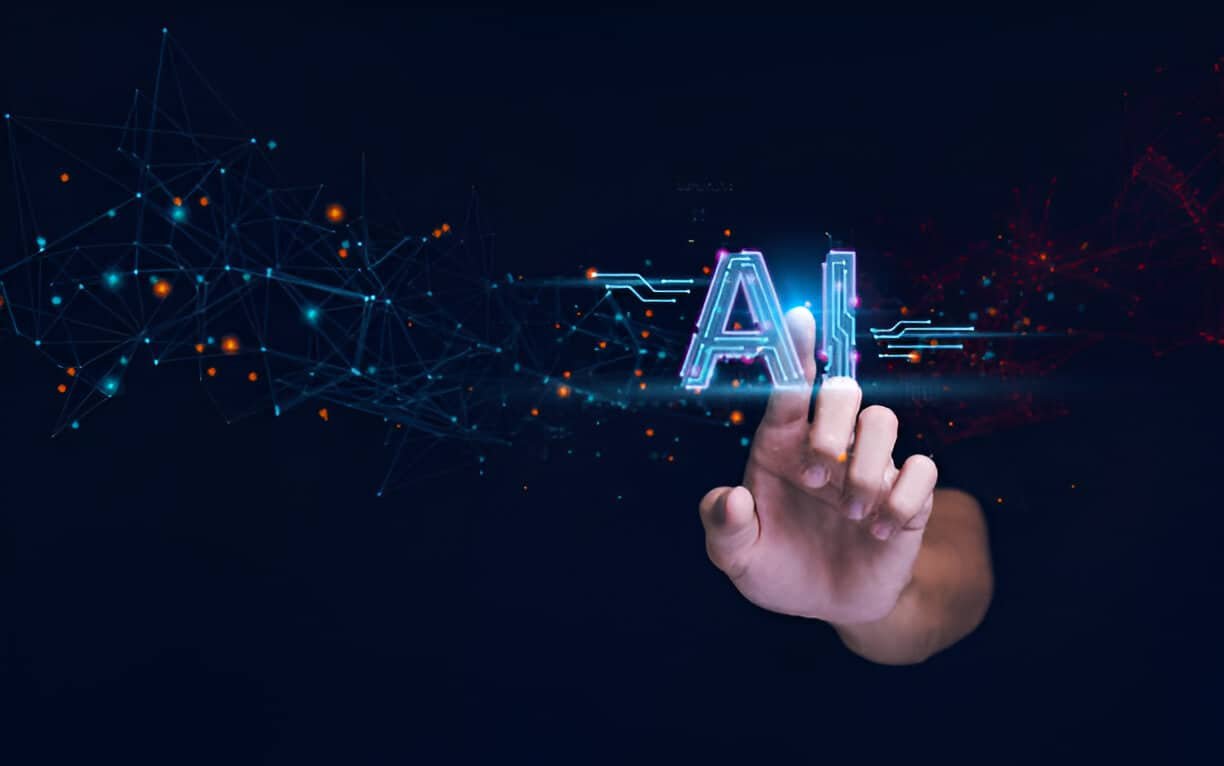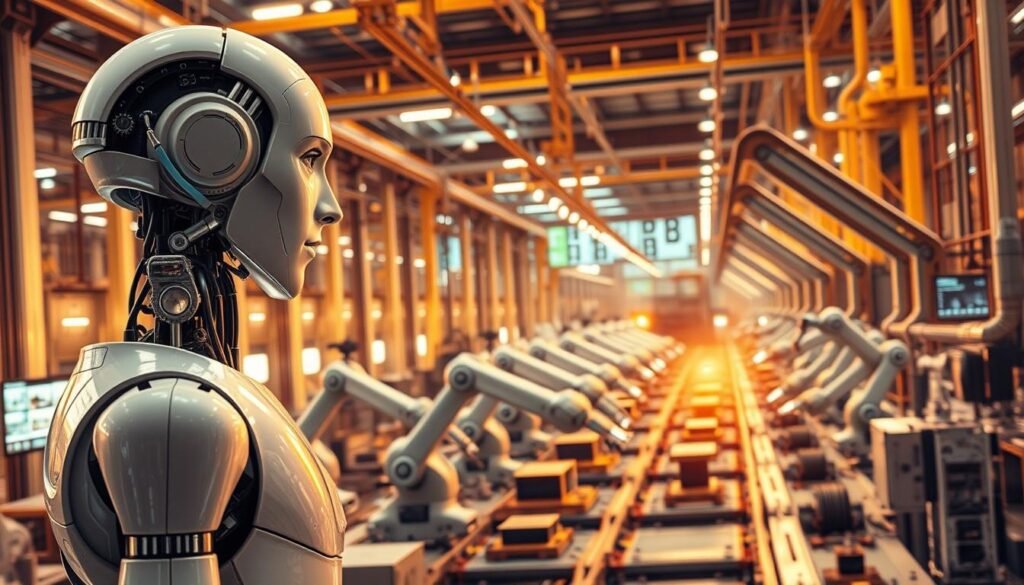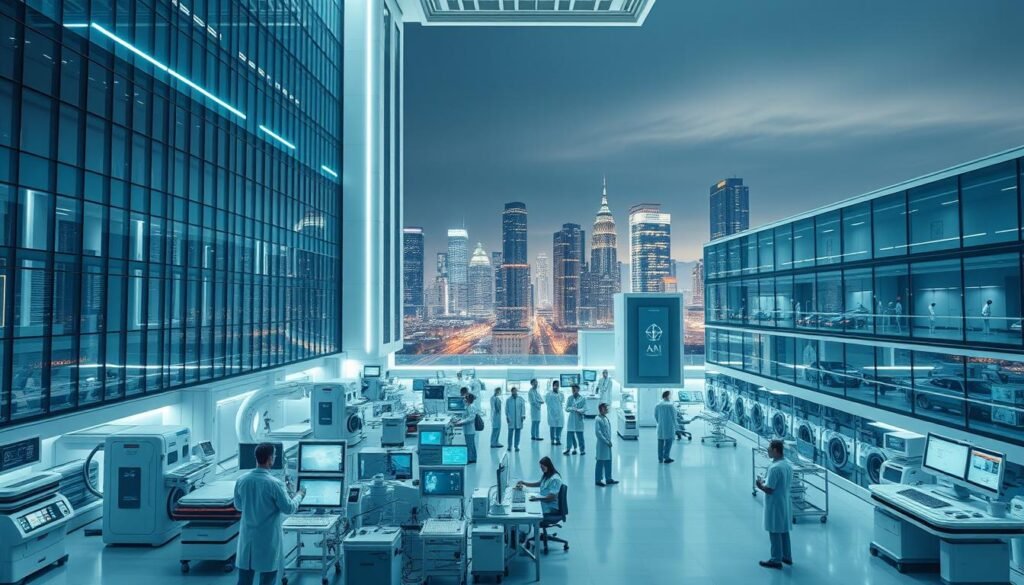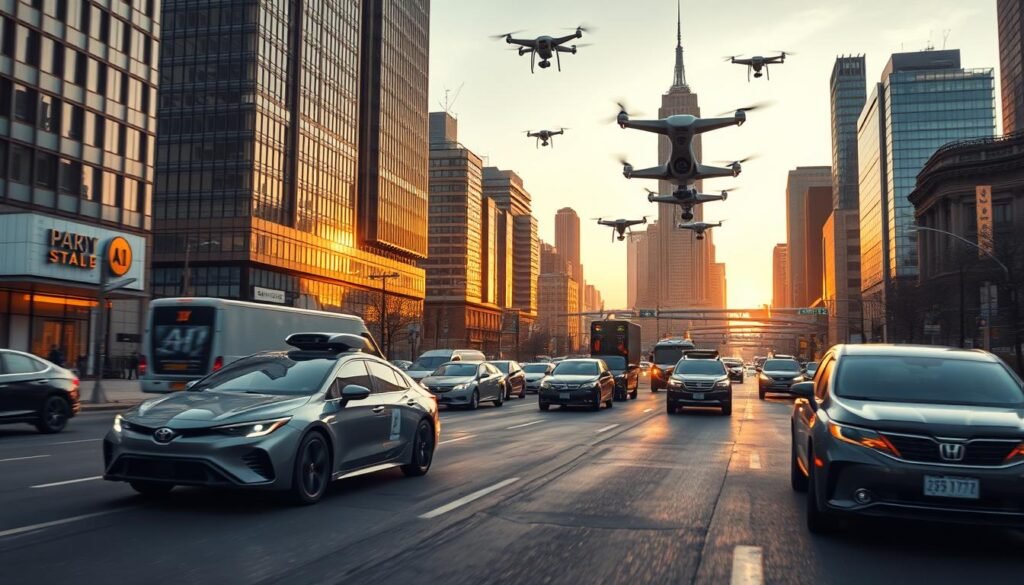I’ve been watching AI replace human jobs for 2 years now. And honestly? The reality is way more interesting than the scary headlines suggest.
Sure, artificial intelligence is shaking things up. But after seeing countless implementations across different industries, I can tell you this:
We’re not heading toward some robot apocalypse where machines do everything.
Here’s what’s actually happening.
What I’ve Observed: AI’s Real Impact on Jobs
Artificial intelligence automation is real. I’ve seen it firsthand. But it’s not the clean sweep many fear.
Last year, I watched a manufacturing company implement AI for quality control. The system could spot defects humans missed. Did it fire the quality inspectors? Nope. They became system supervisors, handling complex cases the AI couldn’t figure out.
That’s the pattern I keep seeing everywhere.
Key Takeaways
- AI excels at specific tasks but struggles with anything requiring flexibility
- Workforce disruption creates new roles as often as it eliminates old ones
- The companies thriving are those using AI to boost human capabilities
- Human versus machine thinking misses the point – it’s about collaboration
- You need to adapt, but you don’t need to panic
How AI Actually Works (And Why It Can’t Do Everything)
Let me break this down simply.
Modern machine learning systems are incredibly good at pattern recognition. Feed them millions of examples, and they’ll spot things you’d never notice. They’re like that friend who’s amazing at Where’s Wally, but can’t tell you why they chose that restaurant for dinner.
Technology advancement has been explosive. I remember when chatbots could barely understand “hello.” Now they write code and analyze data. But here’s the thing – they’re still following patterns, not truly understanding.
When ChatGPT writes an email, it’s predicting what words should come next based on training data. When you write an email, you’re thinking about the person reading it, the company culture, what happened in yesterday’s meeting.
That difference matters more than you think.
Where AI Actually Replaces Humans (And Where It Doesn’t)
I’ve seen AI completely take over certain jobs. Data entry clerks? Mostly gone. Basic bookkeeping? Automated. Simple customer service queries? Handled by bots.
But I’ve also seen where it fails spectacularly.
Jobs AI Handles Well
- Repetitive data processing
- Pattern recognition in large datasets
- Basic customer inquiries
- Simple scheduling and routing
- Quality control with clear parameters
Jobs That Still Need Humans
- Anything requiring emotional intelligence
- Complex problem-solving with incomplete information
- Creative work (though AI assists here)
- Managing people and relationships
- Handling exceptions and edge cases
The automated workforce isn’t replacing the human workforce. It’s reshaping it.
Real Examples From Different Industries
Let me share what I’ve seen across various sectors.
Manufacturing: The Predictable Success Story
I visited a Toyota plant last year. Their AI system predicts machine failures before they happen. It’s saved them millions in downtime.
But here’s what surprised me: they didn’t cut their maintenance staff. Instead, these workers shifted from reactive repairs to preventive maintenance. They use AI insights to stay ahead of problems.
The result? Higher job satisfaction (less emergency stress) and better plant efficiency.
Healthcare: Where AI Shines But Can’t Replace the Human Touch
Medical AI can spot skin cancer better than dermatologists in controlled tests. I’ve seen radiologists use AI to catch tumors they might have missed.
But have you ever tried getting medical advice from a chatbot when you’re worried about chest pain at 2 AM? It’s technically accurate but emotionally useless.
Doctors aren’t going anywhere because medicine isn’t just about diagnosis. It’s about communication, empathy, and handling the messy uncertainty of human bodies and emotions.
Customer Service: The Good, Bad, and Frustrating
AI chatbots handle about 80% of customer queries now. They’re fast, never rude, and available 24/7.
I love them for simple stuff: “What’s my account balance?” “When does my subscription expire?”
But when something goes wrong with my internet and I need someone who understands that I’ve already tried turning it off and on again? Give me a human every time.
The smart companies use AI for the routine stuff and save human agents for complex problems. Customers are happier, and agents deal with more interesting challenges.
Creative Industries: The Surprise Battleground
This one shocked me. I thought creative work would be safe from automation. Wrong.
AI can now write articles, create art, and compose music. I use AI tools daily for brainstorming and rough drafts. They’re incredibly helpful.
But here’s what I’ve learned: AI creates, but humans curate. AI generates ideas, but humans decide what matters. AI can write a technically perfect blog post, but it can’t understand why your audience cares about this topic today.
The creatives thriving are those using AI as a powerful assistant, not those trying to compete with it.
The Economic Reality: Jobs Change, They Don’t Just Disappear
Here’s something the doom-and-gloom articles miss: job displacement has happened before.
When ATMs arrived in the 1970s, everyone predicted mass layoffs for bank tellers. Instead, banks opened more branches (ATMs made them cheaper to operate), and tellers shifted to relationship management and complex transactions.
The same pattern repeats with AI.
Yes, some jobs disappear. But new ones emerge. I’ve seen companies create entirely new roles: AI trainers, automation specialists, human-AI collaboration managers.
The future of work isn’t about humans versus machines. It’s about humans with machines versus humans without them.
What the Data Actually Shows
According to the World Economic Forum, AI will eliminate 85 million jobs by 2025 but create 97 million new ones. That’s a net gain of 12 million jobs.
I’ve seen this locally too. A logistics company I consulted for automated their route planning. They laid off 3 route planners but hired 5 people for customer experience, data analysis, and system management roles.
The math works, but the transition isn’t automatic. People need help adapting.
Ethical Challenges We Can’t Ignore
Working in tech, I’ve seen how AI systems can go wrong.
I once audited an AI hiring system that consistently ranked male candidates higher. The training data reflected historical bias, and the AI learned to perpetuate it.
Another time, I saw a loan approval algorithm that discriminated against certain zip codes. Technically, it wasn’t considering race – but the effect was the same.
These aren’t just technical problems. They’re human problems requiring human oversight.
We need transparency in AI decision-making. If an algorithm denies your loan application or rejects your resume, you deserve to know why.
The Accountability Gap
Here’s what keeps me up at night: as we automate more decisions, who’s responsible when things go wrong?
If a self-driving car causes an accident, is it the manufacturer’s fault? The software company’s? The owner’s?
These questions don’t have easy answers, but we need to figure them out before AI becomes more pervasive.
What You Should Actually Do About AI
Stop panicking. Start adapting.
I’ve coached dozens of professionals through AI transitions. The ones who succeed share common traits:
Focus on Human-Centric Skills
AI can analyze data, but it can’t read a room. It can generate content, but it can’t understand why your boss looked annoyed during the meeting.
Develop skills that require human judgment:
- Emotional intelligence
- Creative problem-solving
- Complex communication
- Relationship building
- Strategic thinking
Learn to Work With AI, Not Against It
I use AI tools daily. They help me research faster, brainstorm ideas, and handle routine tasks. But I still do the thinking, deciding, and creating.
You don’t need to become a programmer. You just need to understand what AI can do for you.
Stay Curious and Keep Learning
The AI landscape changes monthly. What worked last year might be obsolete today.
I spend about an hour each week learning about new AI tools and techniques. Not because I love technology (though I do), but because understanding these tools keeps me valuable.
Build a Diverse Skill Set
Don’t put all your eggs in one basket. If your entire job can be automated, that’s a problem regardless of AI.
I know marketers who learned data analysis, accountants who developed project management skills, and engineers who improved their communication abilities.
Diversification protects you from any kind of change, not just AI.
The Collaboration Future: What I Predict
Based on everything I’ve seen, here’s where we’re heading:
Human-AI teams will dominate. The most effective organizations will be those that figure out how to combine human creativity with AI efficiency.
I’ve seen this work beautifully. Marketing teams that use AI for data analysis and humans for strategy. Sales teams that use AI for lead scoring and humans for relationship building.
The future belongs to people who can orchestrate these partnerships.
New Job Categories Emerging
I’m already seeing roles that didn’t exist five years ago:
- AI prompt engineers (people who know how to get the best results from AI systems)
- Human-AI interaction designers
- AI ethics specialists
- Automation process managers
These jobs require both technical understanding and human skills. They’re AI-proof because they exist at the intersection of human and machine capabilities.
What Makes Us Irreplaceably Human
After years of watching AI develop, I’ve realized something important: our value isn’t in what we can do, but in how we do it.
AI can write music, but it can’t understand why a song makes you cry. It can analyze poetry, but it can’t feel the longing in the words.
We bring context, emotion, and meaning to everything we touch. Those aren’t bugs in human programming – they’re features.
As AI handles more routine work, our uniquely human abilities become more valuable, not less.
The Bottom Line
Will AI replace human workers? Some, yes. All of us? Absolutely not.
I’ve watched this transformation from the inside. Companies that try to eliminate humans entirely struggle. Those that use AI to amplify human capabilities thrive.
The vision of a fully automated workforce sounds efficient on paper, but it breaks down in practice. You need humans for the messy, unpredictable stuff that makes businesses actually work.
Your job might change. Your industry will definitely change. But if you’re willing to adapt and learn, you’ll find opportunities you never imagined.
The future of work isn’t about surviving the robot takeover. It’s about learning to dance with machines that make us more capable than we’ve ever been.
And honestly? That future looks pretty exciting to me.
FAQ
Will AI completely replace human workers in the future? Based on what I’ve observed, no. AI will automate certain tasks and transform many jobs, but complete replacement is unlikely. The most successful companies combine AI efficiency with human creativity and judgment.
What are the potential economic implications of AI-driven automation? I’ve seen workforce disruption create new opportunities alongside challenges. While some roles disappear, new jobs emerge. The key is managing the transition through retraining and policy support.
How is AI being used in various industries like healthcare, finance, and transportation? From my experience, AI augments human capabilities rather than replacing them. In healthcare, it assists diagnosis. In finance, it detects fraud. In transportation, it optimizes routes. But humans remain essential for complex decisions and customer relationships.
What are the ethical considerations of an AI-driven workforce? I’ve seen bias in AI systems firsthand. We need transparency in automated decisions, accountability for AI actions, and fairness in how these systems treat different groups of people.
Can AI be used to enhance human creativity and innovation? Absolutely. I use AI tools daily for brainstorming and content creation. They handle routine tasks so humans can focus on strategy, meaning, and emotional connection.
How can individuals prepare for an AI-enhanced future? Focus on skills that complement AI: emotional intelligence, creative problem-solving, and relationship building. Learn to work with AI tools rather than fear them. Stay curious and keep adapting.
What is the likely future of human-AI collaboration? Based on current trends, we’re heading toward partnership models where AI handles data processing and routine tasks while humans provide creativity, strategy, and interpersonal skills. The most successful people will be those who orchestrate these partnerships effectively.






